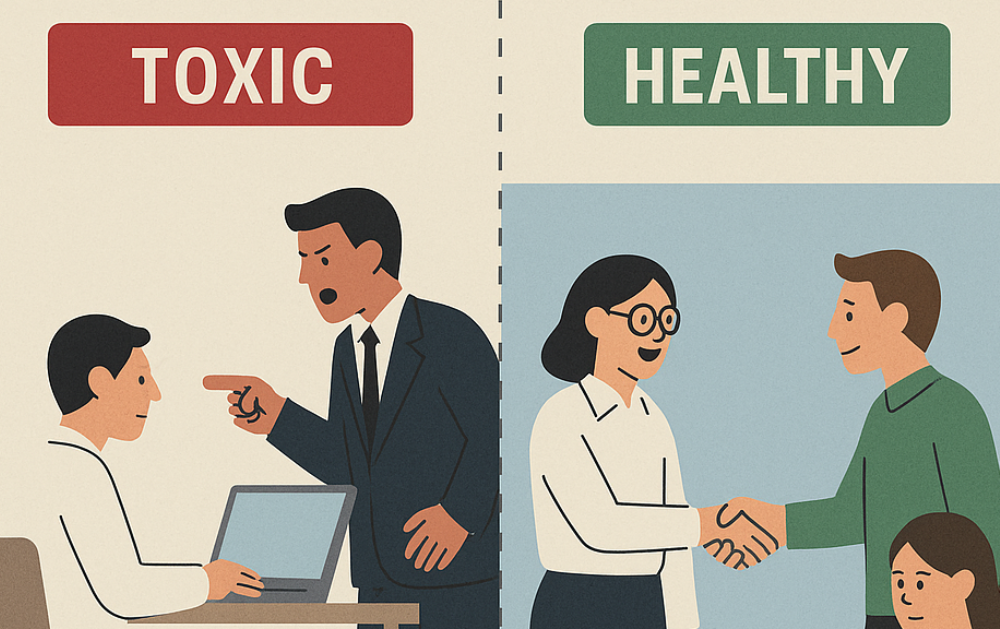🚫 Workplace Bullying: How to Prevent the Silent Threat Undermining Your Culture and Safety

“It’s just a personality clash.”
“She’s tough, but that’s her leadership style.”
“He’s just under pressure.”
These are the excuses leaders often use to dismiss what is really happening—bullying in the workplace. And when left unaddressed, it is more than bad behavior—it is a breeding ground for toxicity, turnover, liability, and even violence.
At Risk Mitigation Technologies LLC, we believe workplace bullying is not a rite of passage or a leadership quirk. It is a preventable hazard. And it deserves the same proactive approach you would take to physical safety threats.
What Is Workplace Bullying?
Workplace bullying is repeated, health-harming mistreatment of one or more persons by one or more perpetrators. It can include:
- Verbal abuse or ridicule
- Intimidating, threatening, or humiliating behavior
- Sabotaging work performance or reputation
- Social exclusion or isolation
- Micromanagement meant to control or degrade
- Manipulation of policies or procedures to target someone
Unlike harassment (which is tied to protected characteristics like race, gender, etc.), bullying can target anyone, making it harder to report and regulate—but no less harmful.
Why It Matters: The Risks of Ignoring Bullying
Bullying does not just damage morality, erodes trust, productivity, and psychological safety. Over time, it can lead to:
- Increased turnover and loss of institutional knowledge
- Absenteeism and presenteeism
- Mental health issues like anxiety, depression, and PTSD
- Retaliation and escalation—bullying is a precursor to workplace violence
- Legal exposure under negligent supervision, hostile work environment, or failure to protect
- Unchecked bullying is a liability—morally, legally, and financially
Early Warning Signs: Do not Wait for a Formal Complaint
Most bullied employees do not report it. They suffer in silence—until they leave, break down, or blow up. So, leaders need to be alert to signs like:
- A once high-performing employee suddenly disengaging
- Clusters of complaints around the same individual
- Increased use of sick days, stress claims, or HR “check-ins”
- Team members avoiding certain meetings or projects
- Gossip, fear, or passive-aggressive communication patterns
- Silence does not mean safety. It often means fear.
Root Causes: Why Bullying Thrives
Bullying is not random. It thrives in environments where:
- Leadership avoids conflict or lacks emotional intelligence
- Policies exist on paper but not in practice
- Performance is valued over people
- Reporting channels are unclear or untrusted
- Managers are promoted for technical skills, not leadership skills
- “High performers” are protected at all costs
- Culture drives behavior. If bullying is tolerated, it will be repeated.
Prevention Starts with Leadership: 7 Initiative-taking Strategies
1. Define It, Do not Deny It
Create a clear, written anti-bullying policy—separate from harassment—outlining unacceptable behaviors, reporting mechanisms, and consequences.
2. Train Managers Like First Responders
Your frontline leaders are your early detection system. Train them to recognize bullying, document patterns, and intervene early.
3. Create Psychological Safety
People need to feel safe to speak up. Anonymous reporting, open-door policies, and non-retaliation assurances make a difference.
4. Monitor Patterns, Not Just Incidents
A single difficult day is one thing. A pattern of targeted mistreatment is bullying. Use HR data and feedback loops to identify repeat offenders or high-risk units.
5. Intervene Before It Escalates
Address behavior immediately—even if it comes from a top performer. Early coaching or corrective action can prevent formal investigations later.
6. Set the Tone at the Top
Leaders must model respect, humility, and accountability. If executives tolerate or excuse bullying, so will everyone else.
7. Align Performance Reviews with Behavior
Do not reward results alone. Integrate values-based behavior and team feedback into evaluations. Make “how” just as important as “what.”
Prevention Is Cheaper Than Reaction
Investigations, turnover, lawsuits, and lost productivity cost far more than proactive training and culture-building. And here is the truth: bullying is preventable.
That is where Risk Mitigation Technologies LLC comes in. Our customized workplace violence prevention solutions identify high-risk dynamics before they become legal or safety crises.
Final Thought: “Tough” Is different from Toxic
Tough is not toxic. Assertive is not abusive. Know the difference. Lofty standards do not require humiliation. And conflict does not have to crush dignity. The most successful teams thrive on psychological safety, respectful accountability, and leaders who know the difference.
If you are seeing signs of bullying—or want to make sure it never takes root—let’s talk. Prevention is not just possible. It is your responsibility.

Founder | Risk Mitigation Technologies LLC



